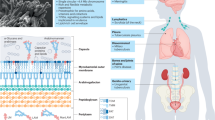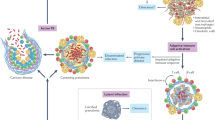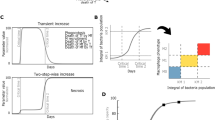Abstract
Over 30% of the world's population is infected with Mycobacterium tuberculosis (Mtb), yet only ∼5–10% will develop clinical disease1. Despite considerable effort, researchers understand little about what distinguishes individuals whose infection progresses to active tuberculosis (TB) from those whose infection remains latent for decades. The variable course of disease is recapitulated in cynomolgus macaques infected with Mtb2. Active disease occurs in ∼45% of infected macaques and is defined by clinical, microbiologic and immunologic signs, whereas the remaining infected animals are clinically asymptomatic2,3. Here, we use individually marked Mtb isolates and quantitative measures of culturable and cumulative bacterial burden to show that most lung lesions are probably founded by a single bacterium and reach similar maximum burdens. Despite this observation, the fate of individual lesions varies substantially within the same host. Notably, in active disease, the host sterilizes some lesions even while others progress. Our data suggest that lesional heterogeneity arises, in part, through differential killing of bacteria after the onset of adaptive immunity. Thus, individual lesions follow diverse and overlapping trajectories, suggesting that critical responses occur at a lesional level to ultimately determine the clinical outcome of infection. Defining the local factors that dictate outcome will be useful in developing effective interventions to prevent active TB.
This is a preview of subscription content, access via your institution
Access options
Subscribe to this journal
Receive 12 print issues and online access
$259.00 per year
only $21.58 per issue
Buy this article
- Purchase on SpringerLink
- Instant access to full article PDF
Prices may be subject to local taxes which are calculated during checkout




Similar content being viewed by others
References
Zumla, A., Raviglione, M., Hafner, R. & von Reyn, C.F. Tuberculosis. N. Engl. J. Med. 368, 745–755 (2013).
Lin, P.L. et al. Quantitative comparison of active and latent tuberculosis in the cynomolgus macaque model. Infect. Immun. 77, 4631–4642 (2009).
Capuano, S.V. III et al. Experimental Mycobacterium tuberculosis infection of cynomolgus macaques closely resembles the various manifestations of human M. tuberculosis infection. Infect. Immun. 71, 5831–5844 (2003).
Barry, C.E. III et al. The spectrum of latent tuberculosis: rethinking the biology and intervention strategies. Nat. Rev. Microbiol. 7, 845–855 (2009).
Lin, P.L. & Flynn, J.L. Understanding latent tuberculosis: a moving target. J. Immunol. 185, 15–22 (2010).
Kaplan, G. et al. Mycobacterium tuberculosis growth at the cavity surface: a microenvironment with failed immunity. Infect. Immun. 71, 7099–7108 (2003).
Via, L.E. et al. Infection dynamics and response to chemotherapy in a rabbit model of tuberculosis using [18F]2-fluoro-deoxy-d-glucose positron emission tomography and computed tomography. Antimicrob. Agents Chemother. 56, 4391–4402 (2012).
Davis, J.M. & Ramakrishnan, L. The role of the granuloma in expansion and dissemination of early tuberculous infection. Cell 136, 37–49 (2009).
Canetti, G. The Tubercle Bacillus (Springer Publishing, New York, 1955).
Lin, P.L. et al. Metronidazole prevents reactivation of latent Mycobacterium tuberculosis infection in macaques. Proc. Natl. Acad. Sci. USA 109, 14188–14193 (2012).
Ford, C.B. et al. Use of whole genome sequencing to estimate the mutation rate of Mycobacterium tuberculosis during latent infection. Nat. Genet. 43, 482–486 (2011).
Lin, P.L. et al. Tumor necrosis factor neutralization results in disseminated disease in acute and latent Mycobacterium tuberculosis infection with normal granuloma structure in a cynomolgus macaque model. Arthritis Rheum. 62, 340–350 (2010).
Munoz-Elías, E.J. et al. Replication dynamics of Mycobacterium tuberculosis in chronically infected mice. Infect. Immun. 73, 546–551 (2005).
Wallis, R.S. et al. Tuberculosis biomarkers discovery: developments, needs, and challenges. Lancet Infect. Dis. 13, 362–372 (2013).
Lin, P.L. et al. Early events in Mycobacterium tuberculosis infection in cynomolgus macaques. Infect. Immun. 74, 3790–3803 (2006).
Walzl, G., Ronacher, K., Hanekom, W., Scriba, T.J. & Zumla, A. Immunological biomarkers of tuberculosis. Nat. Rev. Immunol. 11, 343–354 (2011).
Lin, P.L. et al. Radiologic responses in cynomolgus macaques for assessing tuberculosis chemotherapy regimens. Antimicrob. Agents Chemother. 57, 4237–4244 (2013).
Kennedy, H.E., Vandiviere, H.M. & Willis, H.S. The effects of extended incubation on propagability of tubercle bacilli. Am. Rev. Tuberc. 77, 802–814 (1958).
Vandiviere, H.M., Loring, W.E., Melvin, I. & Willis, S. The treated pulmonary lesion and its tubercle bacillus. II. The death and resurrection. Am. J. Med. Sci. 232, 30–37 (1956).
Keane, J. et al. Tuberculosis associated with infliximab, a tumor necrosis factor α-neutralizing agent. N. Engl. J. Med. 345, 1098–1104 (2001).
Acknowledgements
These studies were funded by the Bill & Melinda Gates Foundation (grants to J.L.F. and P.L.L.), the Otis Childs Trust of the Children's Hospital of Pittsburgh Foundation (P.L.L.), US National Institutes of Health, National Institute of Allergy and Infectious Diseases DAIT BAA-05-10 (J.L.F.), US National Institutes of Health grants HL106804 (J.L.F.), AI094745 (J.L.F.), HL110811 (J.L.F.), DP2 0D001378 (S.M.F.) and AI076217 (S.M.F.), the Howard Hughes Medical Institute, the Physician Scientist Early Career Award (S.M.F.), the Harvard Merit Fellowship (C.B.F.), the Burroughs Wellcome Foundation Investigator in the Pathogenesis of Infectious Diseases Fellowship (S.M.F.), the Robert A. Welch Foundation (J.S.) and the Melvin J. and Geraldine L. Glimcher Associate Professorship (S.M.F.). We are grateful to E. Klein and C. Janssen for conducting necropsies, C. Scanga for coordination of studies, M. Rodgers, C. Cochran and C. Bigbee for excellent technical assistance, M. O'Malley, P. Johnston, J. Tomko, D. Fillmore and J. Frye for outstanding veterinary technical assistance, the members of the Flynn and Fortune labs for helpful discussions and B. Bloom, D. Young and E. Rubin for helpful comments on the manuscript.
Author information
Authors and Affiliations
Contributions
P.L.L., C.B.F., S.M.F. and J.L.F. conducted experiments, analyzed results and drafted the manuscript. R.G., T.I. and J.S. performed Illumina sequencing and edited the manuscript. M.T.C. performed PET-CT analysis and assisted in necropsies. A.J.M. conducted experiments.
Corresponding authors
Ethics declarations
Competing interests
The authors declare no competing financial interests.
Supplementary information
Supplementary Text and Figures
Supplementary Figures 1–4 and Supplementary Tables 1–5. (PDF 1348 kb)
Rights and permissions
About this article
Cite this article
Lin, P., Ford, C., Coleman, M. et al. Sterilization of granulomas is common in active and latent tuberculosis despite within-host variability in bacterial killing. Nat Med 20, 75–79 (2014). https://doi.org/10.1038/nm.3412
Received:
Accepted:
Published:
Issue date:
DOI: https://doi.org/10.1038/nm.3412
This article is cited by
-
CT and 18F-FDG PET abnormalities in contacts with recent tuberculosis infections but negative chest X-ray
Insights into Imaging (2022)
-
Immune evasion and provocation by Mycobacterium tuberculosis
Nature Reviews Microbiology (2022)
-
Iron limitation in M. tuberculosis has broad impact on central carbon metabolism
Communications Biology (2022)
-
Types and functions of heterogeneity in mycobacteria
Nature Reviews Microbiology (2022)
-
Genomic analyses of Mycobacterium tuberculosis from human lung resections reveal a high frequency of polyclonal infections
Nature Communications (2021)



